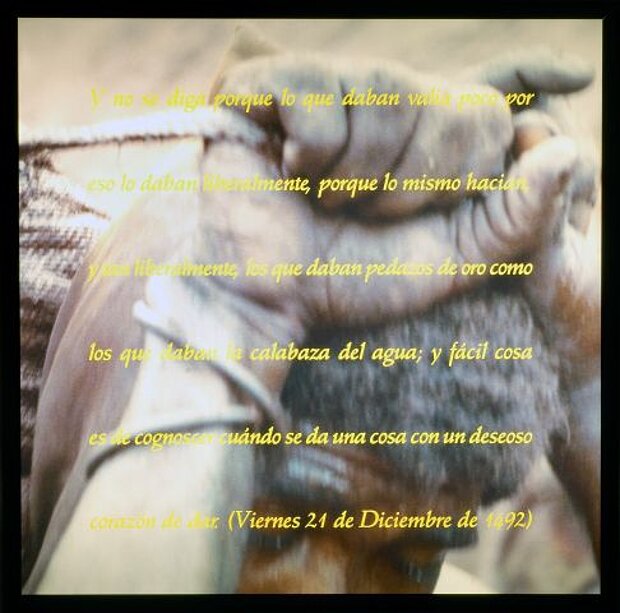
Jaar, Alfredo
Terra Non Descoperta
The Undiscovered Land
1991

© mumok
| Object description | Light box with transparency |
|---|---|
| Object category | photographie |
| Material |
Slide:
polyester (fiber),
plastic
|
| Technique |
Object:
sculpting,
photographic processes
|
| Dimensions |
Object:
height: 51,8 cm,
width: 51,8 cm,
depth: 13,3 cm
|
| Year of acquisition | 2007 |
| Inventory number | MB 31/0 |
| Creditline | Sammlung Dieter und Gertraud Bogner im mumok |
| Rights reference | Jaar, Alfredo |
| Further information about the person | Jaar, Alfredo [GND] |
| Literature | Leidenschaftlich Exakt.Sammlung Dieter und Gertraud Bogner im mumok |
Everywhere in the cities, illuminated advertising signs promise the joys of consumption throughout the night. Alfredo Jaar uses these illuminated cases and lays a false trail by citing advertising. The Chilean artist lives and works in New York, the true capitalist metropolis, but the themes of his works usually revolve around lamentable conditions in South America. He makes political statements on social injustice and exploitation. The illuminated box shows an excerpt of a photograph with a text above it. In the image, the hands and head of an unknown laborer are illuminated. We cannot see the heavy burden he carries, but this small section of the image is enough for us to guess that he earns his money under inhuman conditions. The work "Terra Non Descoperta"—Undiscovered Land—is a part of Alfredo Jaar’s series Gold in the Morning. This photo shows a worker from the Peleda gold mine in Brazil. The text in Spanish is a short excerpt from the logbook of Christopher Columbus’s first expedition to South America. Alfredo Jaar not only cuts the photo but also the allegedly authentic piece of text—an edit which we hardly notice. Columbus’s journal has only been passed down to us as a copy made by a Dominican monk and including his own annotations. Jaar’s Columbus quote is taken from the entry for December 21, 1492, a Friday. Here, Columbus notes with amazement that the local population is hospitable and generous, and gives gold as freely as water. Jaar does not make his images smaller or cut texts just to simplify matters. Rather he concentrates in both image and text on the “undiscovered land,” which is both the historical territory of Christopher Columbus and today’s exploited gold miners who nobody wants to see. Colonialism at the beginning and in its present form.
© mumok – museum moderner kunst stiftung ludwig wien